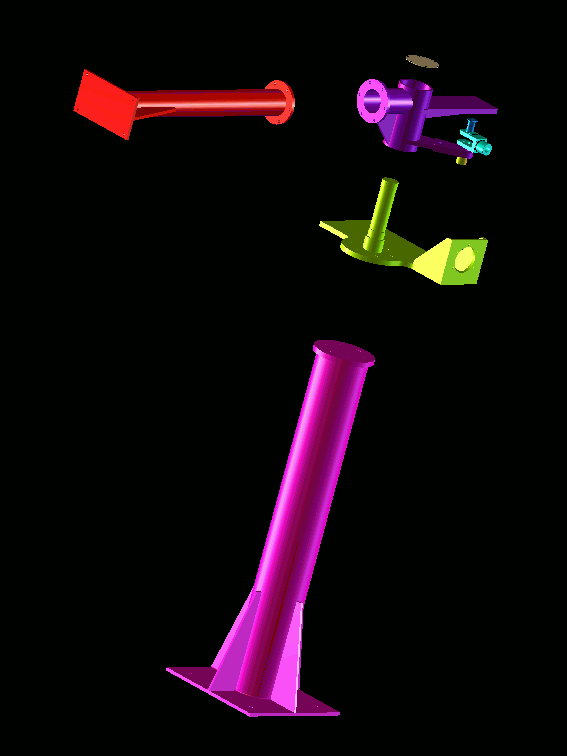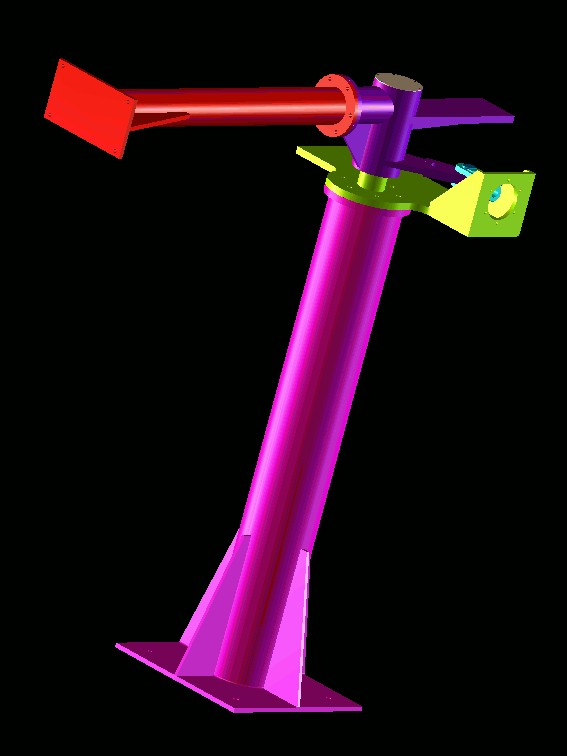Current Activities
Manufacturing has been the strength of the country for quite some time.
Automotive industry, in particular, has a strong hold in the areas of
assembly, parts and supplies, as well as various manual operations.
Infrastructure and supporting industry thus became the region most
sought-after asset from investors all over the world. Typical examples
are academic excellence and craftmanships of Thai people. Thai engineers
and work force have contributed to the construction of several neighboring
countries' industry. The advent of Information Technology sparks the
explosion of technological application to Thai manufacturing. It is
evident that automation will become state-of-the-practice in every domestic
industry.
At present, Manufacturing Automation (MA) in Thailand is an on-going
activity at NECTEC. The main objectives are not only to create awareness
and application of manufacturing research endeavors to different industrial
sectors, but also the management of technology itself. Typical research
efforts are in the areas of CAD/CAM/CAE, Rapid Product Development (RPD),
Integrated Product Development (IPD), Human Engineering, and
Tele-manufacturing. Each activity will be carried out concurrently by the
researchers at CTL.
Various efforts are under way to establish an electronic information
network for selected industrial sectors to be in line with the MATIC
project. The activities encompass a number of research areas described
in CTL's white paper. Current activities include
3-D modeling (which includes static assembly as shown below) and
interactive assembly, where output will be
displayed on standard Internet plug-in browsers. A sample animation is presented to
demonstrate how interactive assembly viewing will take place. At the outset
of the project (March 1996), the animation was captured by means of video
technique. Interactive viewing, however, will eventually be rendered in
standard STEP format that can be display by conventional browsers. The
research frameworks shall be maintained to strict conformance with
state-of-the-practice
standards. All work
displines are targeted at these international standards so as to attain
maximum level of conformance with others. Results of the research
findings will then be made available where appropriate.
A number of research initiatives are under way to enhance
state-of-the-practice, namely, Engineering Browser, Rapid Product
Development, and Electronic Catalog.
Engineering Browser
The Engineering Browser consists of two main subsystems, namely, a static
browser and an interactive viewer. The static browser merely displays
conventional drawing and a solid 3-D rendering of the part. Users can
perform quick and simple rotation, zooming, and translation of the display.
The interactive viewer, on the other hand, permits both automatic assembly
(through a predefined sequence) and manual manipulation of each components
by the users using constraint-based assembly. The main objective of this
Engineering Browser is to serve as a means for domestic SMEs and foreign
manufacturers, in particular, automotive industry, to view engineering
drawing in its native fashion on the World Wide Web as oppose to conventional
image display (GIF file). As such, it is essential that client machines be
equipped with all the necessary display capabilities. This sequence of
snapshots were rendered with OpenInventor as part of an interactive assembly
browsing demonstration. Fundamentals of Interactive Assembly Modeling are
being pursued to support object viewing in
virtual environment.
Rapid Product Development (RPD)
RPD work is still under investigation.
Electronic Catalog
A mockup prototype of the Electronic Catalog is also presented in the
Electronic Yellow Pages demonstration.
Return to Home Page
Last update: September 12, 1996
National Electronics and Computer Technology Center




